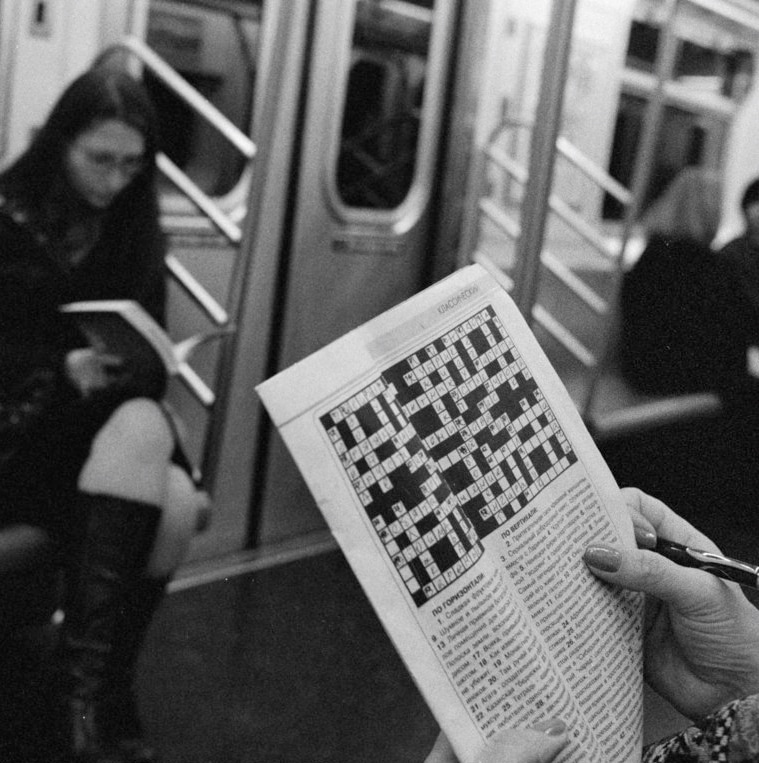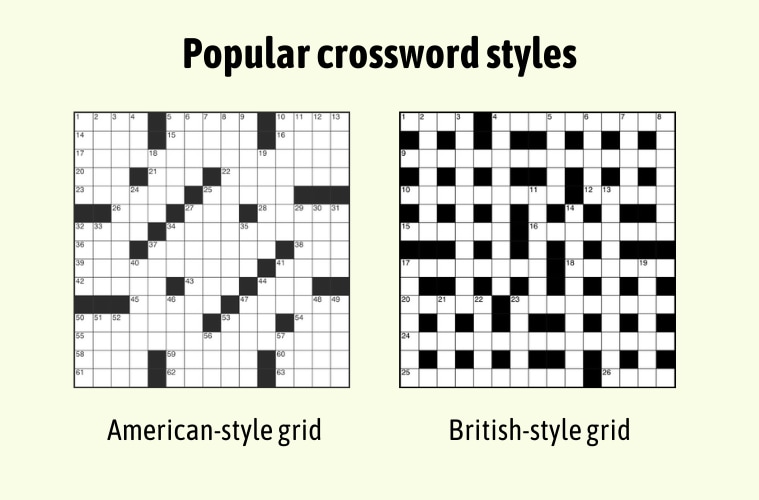5 universal tricks to crack a crossword (original) (raw)

If crosswords scare you, this is likely the #1 reason you’d give to avoid them. It’s understandable, but we’re here to tell you that this is based on a big misconception.
A crossword’s target audience is not the brainiac or the literature student. It’s meant for anyone who is creative. Anyone who enjoys lateral thinking, and is curious to know more about the world.
If you enjoy puzzles, then a crossword is like any other puzzle — understand the rules, and you’ll know how to win. This beginner’s guide will take you through the basics of how to solve a crossword, covering these topics:
- What are the rules for crosswords? (grid and clue examples)
- What are the black boxes in crosswords?
- Crossword solving tips for beginners
- How long should a crossword take?
You can skip to the topic you like. Now let’s get started.
What are the rules for crosswords?
A crossword is a word puzzle where you fill an empty grid with words that intersect (‘cross’) with each other. To find these words, you use a list of numbered clues. This list is divided into clues for words that appear horizontally on the grid (‘Across’), and clues for words that appear vertically on the grid (‘Down’). Each white box in the grid is called a ‘cell’. Only one letter (or number) can fit inside each cell. Often, this letter will be part of both an ‘Across’ and a ‘Down’ word. People who decide the grid pattern, clues, and answers of a crossword are called ‘constructors’ (US) or ‘setters’ (UK).
Play Now | The Indian Cinema Crossword, set by our Puzzle Editor
Story continues below this ad
Types of crosswords
Broadly, crosswords are of three types—mini, classic, and cryptic. A ‘mini’ is usually in a 5×5 (i.e. 5 rows, 5 columns) or 6×6 format. They are simple to solve, with direct clues. A classic grid is what you see in newspapers. It’s usually in a 12×12, 13×13 or 15×15 format. The Indian Express Crossword is a 13×13 grid. The size depends on the publisher, and they may make clues more difficult as the week goes by.
 A woman solves a newspaper crossword on her commute. But online crosswords are all the rage now. Image: Wil540art/Wikimedia Commons
A woman solves a newspaper crossword on her commute. But online crosswords are all the rage now. Image: Wil540art/Wikimedia Commons
Cryptic crosswords are on a completely different level. Each clue in a cryptic crossword is a word puzzle in itself, which must be deciphered to find the answer that goes on the grid. Solving each cryptic clue can require skill at wordplay, anagrams, trivia, and picking up on a crossword setter’s intention. It’s advisable to first get the hang of a classic crossword, before you move onto cryptics.
Types of crossword clues
A classic crossword puzzle has a mix of these types of clues:
> Direct (‘Witch’s brew’ | Answer: POTION)
> Trivia (‘Trans-Himalayan river in South Asia’ | Answer: INDUS)
> Fill in the blank (‘Our ______, Who art in heaven’ | Answer: FATHER)
Story continues below this ad
> Abbreviations, marked with ‘Abbr.’ or shortened clue (‘Econ. yardstick’ | Answer: GDP)
> Sounds or phrases (“May I speak?” | Answer: AHEM)
> Cross-referenced clues: To find one answer, you need the other. (Example: ‘Opposite of 6-Across’)
Our Indianised horror crossword, released on Halloween, has a good mix of all the above clue types. Play it here!
P.S. One answer could be clued in varied ways. When you’re confused, it’s important to try and guess the intention behind a clue — why did the setter choose X words in the clue, and not Y? Is it because Y is too obvious? Is there something unique to X’s phrasing? Setters juggle many factors while writing clues, so as a solver, it’s smart to put yourself in their shoes.
Story continues below this ad
What are the black boxes in crosswords?
The black boxes in crossword grids are called ‘darks’, ‘blocks’ or ‘blacks’ and cannot be filled with letters. They are placed by crossword setters to separate words while creating the grid. Setters often try to maintain ‘rotational symmetry’ when placing these boxes — meaning that if you flip the grid upside down, or rotate it in any direction, the pattern formed by the black boxes will remain the same.
 US and UK-style crossword grids, showing rotational symmetry. Grids by Michael J/Wikimedia Commons
US and UK-style crossword grids, showing rotational symmetry. Grids by Michael J/Wikimedia Commons
Crossword solving tips and tricks
Try these 5 beginner’s tips to solve a mini or classic crossword puzzle:
Fill the easiest clues first
Scan the list of clues for direct hints. Clues that ask you to fill in the blank, or for an antonym (opposite) are easy to guess. If you’re good at quizzing and follow the news, then try the trivia-based clues next. They often use recent events. Once you’ve filled 10-20 per cent of the grid with the easy answers, it’ll give you the motivation (and enough letters) to keep going.
For example, our Amitabh Bachchan game has many easy clues for the shorter words. Aiming to solve them first will give you quick success.
Story continues below this ad
Pay attention to a clue’s tense
The answer will be in the same tense as the clue. For example, if the clue says ‘Starts to bubble, maybe’ then the answer is BOILS. Not BOIL, or BOILED. Another example: If the clue says ‘Races on horseback’, then the answer will be GALLOPS. Not GALLOP, or GALLOPED. Similarly, if a clue uses plural nouns, the answer will also be a plural one.
Watch out for wordplay
The same word can have different meanings or popular usages. Crossword setters are mischievous, and use this opportunity to lead you off course. To stay on track, consider all possible interpretations of a clue.
If we take the example of BOILS, it’s been clued in the past as:
> Gets hot under the collar
> What manager’s blood does, at times
> Heats, as water for pasta
> Blisters
Take a break from solving
The stress of not getting a few answers can cause brain fog that affects the rest of your game. When frustration sets in, put the crossword aside and do something else. Let the clue marinate at the back of your mind. When you return, you’ll have renewed energy and fresh eyes for the grid. The Indian Express Crossword pauses the game’s timer until you’re back.
Story continues below this ad
‘Cheating’ is acceptable
To gently guide you to the finish line, it’s completely okay to Google the trivia in a clue, or to look for a word’s synonyms or antonyms online. For a word where you know some of the letters but can’t crack the solution, try a tool like crosswordtracker.com. In the site’s ‘ANSWER’ box, type in the known letters for your word, and put a ‘?’ for unknown letters. The site will then show you all English words that fit the combination you provided.
For example, if you type ‘G???E’ into the box, it shows these possible solutions:
![]() Suggested solutions after typing ‘G???E’, from crosswordtracker.com. Table sourced from the same site.
Suggested solutions after typing ‘G???E’, from crosswordtracker.com. Table sourced from the same site.
How long should you take to solve a crossword?
Take as long as you like. Crosswords are meant to be relaxing arenas for learning, as you often encounter new words or trivia while solving them. The goal isn’t to rush and finish, but to enjoy that Eureka moment when you crack a clue. There is no minimum solving time to fit into to call yourself an enthusiast.
But, alright, if you’re really curious: a simple mini crossword takes around 30 seconds to 1.5 minutes to finish for an experienced solver. For a new player, it could take between 5 to 8 mins. A classic crossword with a bigger grid is harder to predict. Experienced solvers can finish one within 5 to 10 mins, while the average player may need 20 to 25 mins.
Story continues below this ad
As for competitive solving, the record is held by the US’ Dan Feyer, regarded as one of the best solvers in the world. He solved a New York Times 15×15 crossword in 1 minute and 22 seconds.
Feyer solved 20 crosswords a day to get that good. But there’s no need for a hobbyist solver to practice so hard, or even time themselves. Get into crosswords for the love of solving, and you won’t go off the grid for a long, long time.